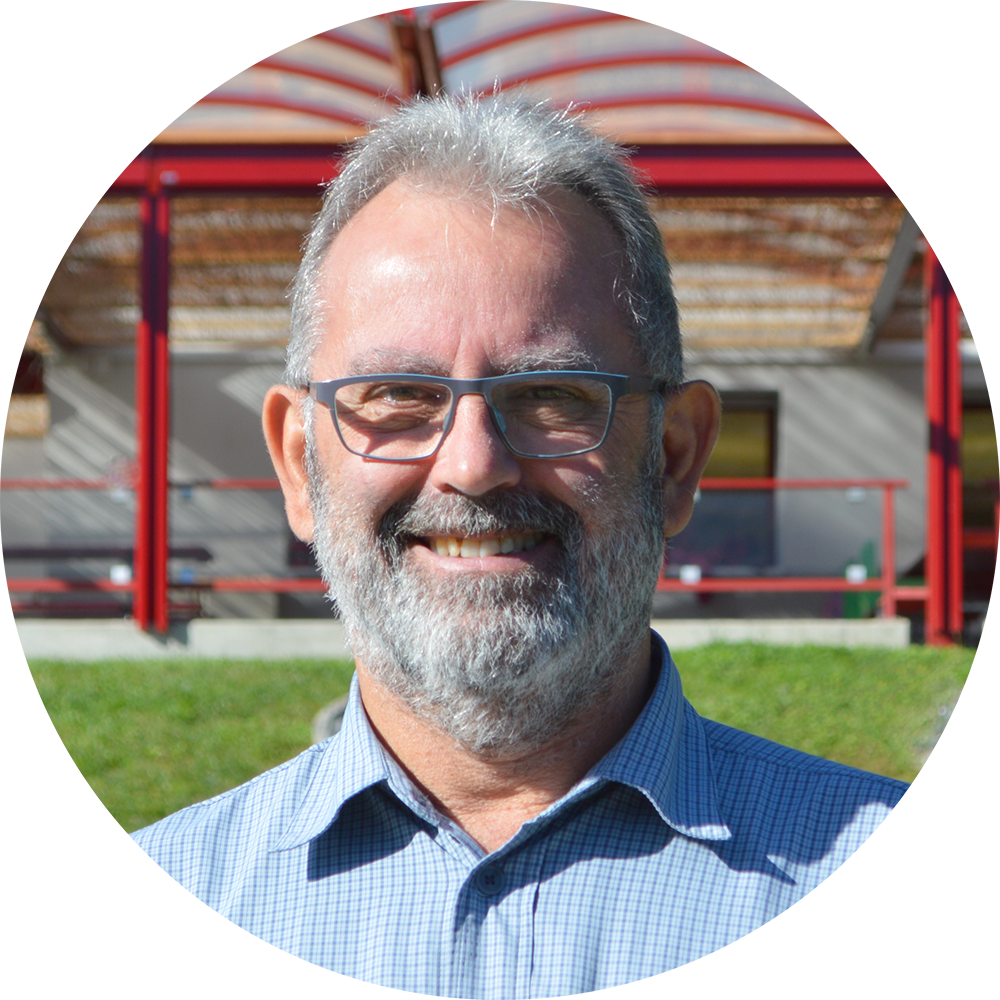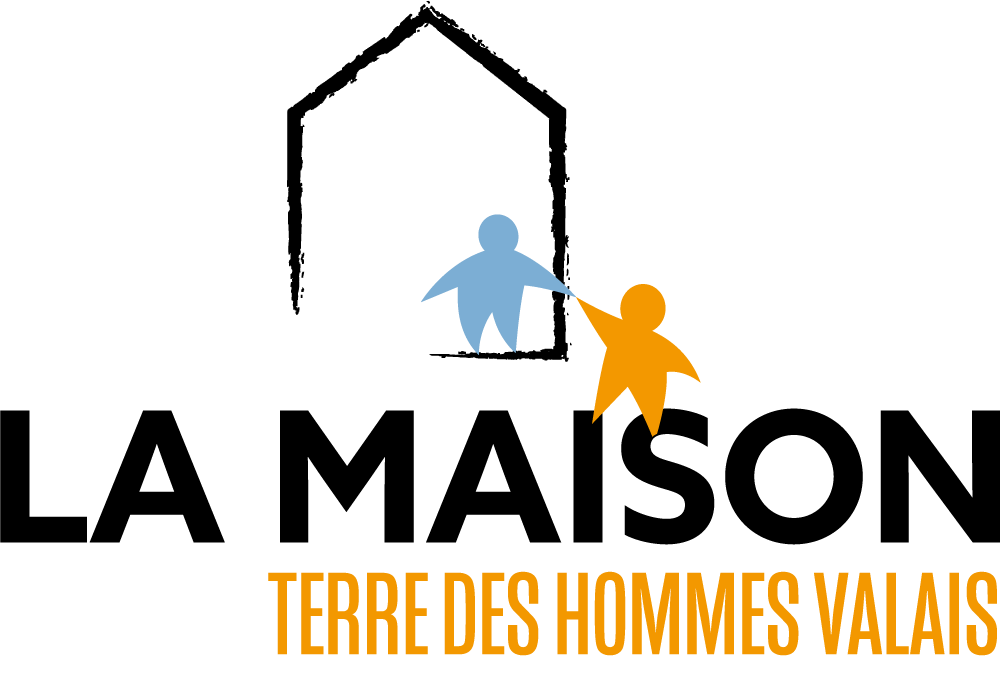At the heart of the night: night watchwomen at La Maison de Terre des hommes Valais
written on the 10.10.2024In the quiet hours of the night, while the world sleeps, dedicated individuals watch over the children. Meet the night watchwomen at La Maison de Terre des hommes Valais, the devoted guardians who light up the institution’s nights with their presence to provide a safe haven for the children in their care. Their stories reveal the complexity and diversity of their responsibilities at La Maison, highlighting the different dynamics between the main building and the pavilion. Discover the challenges they face, the moving moments they experience, and their unwavering commitment.
A typical night at La Maison
Can you describe a typical night as a night watchwoman here at La Maison?
Danièle Miano Delasoie, 13 years on the job: The shift start at 9.05 pm and last until 7.05 am, when the day teams take over. There is a night watchwoman in the main building and another in the pavilion. When we arrive in the evening, we meet with the educator colleague who is still on site. They inform us of any important things that occurred during the day. Then, together, we go to each room to check on the children and their sleeping arrangements. At this point, we identify any who may need to leave early, for example to go for a hospital visit. We also receive a written report from the educational team and the infirmary detailing any specific care or medication needed during the night. Then, we are on our own until 7 am.
Wendy Justiniano, night watchwoman for over 2 years: After checking the rooms, we close the doors and conduct a safety check to ensure that all the machines in the kitchen are switched off and that the fire detection system is functioning. The evening is a good time to have a chat with the older children, who go to bed later than the younger ones. We ask them how they’re doing and what they’ve been up to all day. These moments of sharing help us bond and connect with the children.
Danièle: After checking the rooms, we close the doors and conduct a safety check to ensure that all the machines in the kitchen are switched off and that the fire detection system is functioning. The evening is a good time to have a chat with the older children, who go to bed later than the younger ones. We ask them how they’re doing and what they’ve been up to all day. These moments of sharing help us bond and connect with the children.
Margot Rossier Blanchut, night watchwoman for 7 years and former educator: From 4 am onwards, children may leave to go home. We wake the children up, get them ready, and welcome the volunteer driver who will take them to the airport.

« The child’s safety and life are paramount. We must be attentive to the child’s every concern and need, and be ready to react immediately in the event of an emergency. »
Wendy Justiniano, night watchwoman
Responsibilities of the night watchwomen at La Maison
What are your main responsibilities during your shift?
Wendy: Our main responsibility is to ensure the children’s well-being. The child’s safety and life are paramount. We must be attentive to the child’s every concern and need, and be ready to react immediately in the event of an emergency. For issues beyond our training, we call the nurse on duty. In life-threatening situations, we call an ambulance.
Sylvette Pasche, night watchwomen for 12 years: We also reassure the children when needed and console them when their spirits are low. During our rounds, we ensure the children are breathing well and monitor for any signs of fever. Our other responsibilities include administering medications prepared by the infirmary and relieving any pain with available medications.
Margot: Children with heart conditions often require careful monitoring, especially those who are very tired. We must ensure they don’t run out of breath or run out of oxygen. Children with catheters or continuous feeding tubes also need extra observation during the night.
What types of problems do you most often encounter at night?
Sylvette: We often see pain after operations, typically in the area of the scars, shoulders, chest, back or legs. There are also instances of fever and vomiting.
Wendy: There’s often crying due to nightmares, illness-related fatigue, or the desire to go home to Mum and Dad.
Danièle: Nights can be difficult for the children. Sometimes, a cuddle is more effective than medication for a boo-boo. But, we’re always alert to children’s ailments.
What are the biggest challenges you face as a night watchwoman?
Danièle: The responsibility of being alone at night.
Wendy: Seeing sick and suffering children is hard. I believe a child’s life should be about running, jumping, and playing. It’s sad when the children at La Maison can’t do that because of their condition. That’s why I help them as much as I can, without showing my sadness.
Can you share a particularly difficult situation you had to deal with and how you managed it?
Sylvette: Once, a little girl vomited a lot. I called the nurse on duty, who came and called the ambulance.
Wendy: When I first started working as a night nurse at La Maison, a little girl’s stool pouch came completely unstuck. I called my colleague, who immediately showed me how to deal with the situation.
Margot: For me, child deaths are the most difficult. It can happen in the hospital during or after an operation. Learning about it at the start of your shift takes a lot of strength. Fortunately, it happens very rarely.
« These children have so much inner strength and are so resilient. They’re happy with little and always have a smile on their face. »
Margot Rossier Blanchut, night watchwoman and former educator
Establishing trust
How do you establish trust with the children here?
Sylvette: I talk to them. For those who don’t speak French, I use a translator on my phone.
Danièle: I tell them that I’m proud of their strength and courage, and that their journey is admirable.
Wendy: For me, the most important thing is respect and trust. I want everything to go smoothly and happily. I make sure every child understands that I’m there to help them and that they can talk to me without fear of being judged.
Margot: I’m from Guinea, and I try to build the children’s trust by sharing that I’m from Africa too. I ask about their country, dishes, or songs they know. This helps me relate to the children and help them feel reassured.
Are there any particularly memorable moments or children whose stories have left a lasting impression on you?
Sylvette: All children touch us in one way or another.
Wendy: Yes, we love all children, but there are certain children who stick in our minds. I remember Aimé. He threw up a lot every night. It was really uncomfortable for him. But he never complained and was always in a good mood. He was always cooperative, which was so impressive.
Margot: What really stands out for me is the change before and after an operation when a child arrives at La Maison in very poor health, skinny and not eating. Then, they come back from the operation and spend a few weeks recovering, and they’re not the same child. They manage to eat better and become more radiant and happier. When he goes home, the fire in his eyes is different. It’s beautiful and touching.
What are your hopes for the future of the children you help?
Danièle and Sylvette: A full recovery and a normal life when they return home.
Wendy: A happy and healthy life, without the need to return for another operation.
Margot: And, more generally, that they can go to school and live in good conditions.
What motivates you most in your work?
Danièle and Sylvette: The relevance of the mission and knowing you’re helping to save children.
Wendy: The children’s smiles. Seeing them return to their parents in good health. La Maison de Terre des hommes Valais is a place filled with humanity.
Margot: The children are my best motivation because they have so much inner strength and resilience. They’re happy with little and always have a smile on their face.

In total, sevennight watchwomen take turns looking after the children at La Maison de Terre des hommes Valais. In addition to Danièle, Wendy, Margot, and Sylvette, the team is made up of Angélique Johnson, Habibatou Mouttet and Aurélie Vouillamoz, who joined us in July. Our warmest thanks go to Sonia Berguerand, who has stepped down after 11 years of loyal service.
Testimonial from Fatoumata, aged 13: how teenagers spend their evenings at La Maison

In the evening, we watch TV and play games, like UNO. Bedtime for 13- to 15-year-olds is 9.30 pm on weekdays, 11 pm on weekends. Sometimes the night-lights let us stay up a little later.
When we’re in the room, we don’t go to sleep right away. We talk, but quietly so as not to wake the little ones, or we read.
I like to write: I write in my notebook about what happens during the day. I used to do that back home in Guinea. When I miss my family, I prefer to stay quiet and isolate myself for a while to think about them.
Well-prepared guardians: rigorous training for night watchwomen

Question to Carlos Gutierrez, Head Nurse
What training do the night watchwomen receive, including the specific skills needed to meet the children’s needs?
The night watchwomen at La Maison have a highly responsible job. They are alone in the buildings at night and have the children’s lives in their hands. They have care-related training and experience in the field. This could be training as a Red Cross health auxiliary or as a care and community health assistant. We’re also looking for people skills such as teamwork, empathy and the ability to adapt. At La Maison, there are a variety of ages and backgrounds, as well as cultural differences.
Naturally, there is specific in-house training when the new night watchwoman takes up her post. She works for a month in tandem with another colleague. As the children require specific care, a training day is organised in the infirmary. This training is repeated every year to ensure that the correct procedures are followed. In the longer term, ongoing training is organised in relation to specific pathologies encountered at La Maison, such as noma. Every year, a resuscitation course is compulsory, to ensure that you know how to react correctly, even though this type of situation is extremely rare.
La Maison’s night watchwomen, however, have a more socio-educational role than a nursing one. The infirmary team manages the medical side of things as much as possible during the day, in order to facilitate supervision at night and enable the nurses to focus on contact with the children.
Night-time safety: night watchwomen on the front line

Question to Anne Hehlen, Safety Manager
What safety measures have been put in place to protect children at night, and what role do nightlights play in implementing and monitoring these measures?
A fire detection system connects all the buildings and operates 24 hours a day. At night, from 7 pm to 7 am, it is directly linked to the fire department’s alarm centre, enabling rapid intervention.
Twice a year, the night watchwomen also take a course in how to react in the event of a fire: waking up the children, evacuating the buildings, taking the notebook with the children’s names and pathologies as well as the infirmary telephone, and waiting for the fire department. Trainees sleeping on the Terre des hommes Valais site help with the evacuation and care of the children. Staff, including night watchwomen, are also trained in the use of fire extinguishers. Other safety measures include illuminated emergency exits, emergency lighting and flashlights in case of power cuts.
